
After a long wait, my new incubators arrived yesterday! Now we just have to wait until the new insect room is ready for them…

After a long wait, my new incubators arrived yesterday! Now we just have to wait until the new insect room is ready for them…

Last week we (me and Susana Freitas) published a short video examining why some animals reproduce without sex for TED-ED.
Thanks to all the TED-ED team for making such a cool animation!

Last week we (myself, Richard Holland, Katherine Jones, Graeme Shannon, Kirsty MacLeod, Ewa Krzyszczyk, Caroline Bettridge, and Alexander Georgiev) hosted the Spring ASAB (Association for the Study of Animal Behaviour) conference at Bangor University.
It was great to hear the exciting work being done by so many students and great to be involved in organising a conference I first attended in 2009 (though it did make me feel very old)!
It was also great to attend a conference in person – long may it continue!
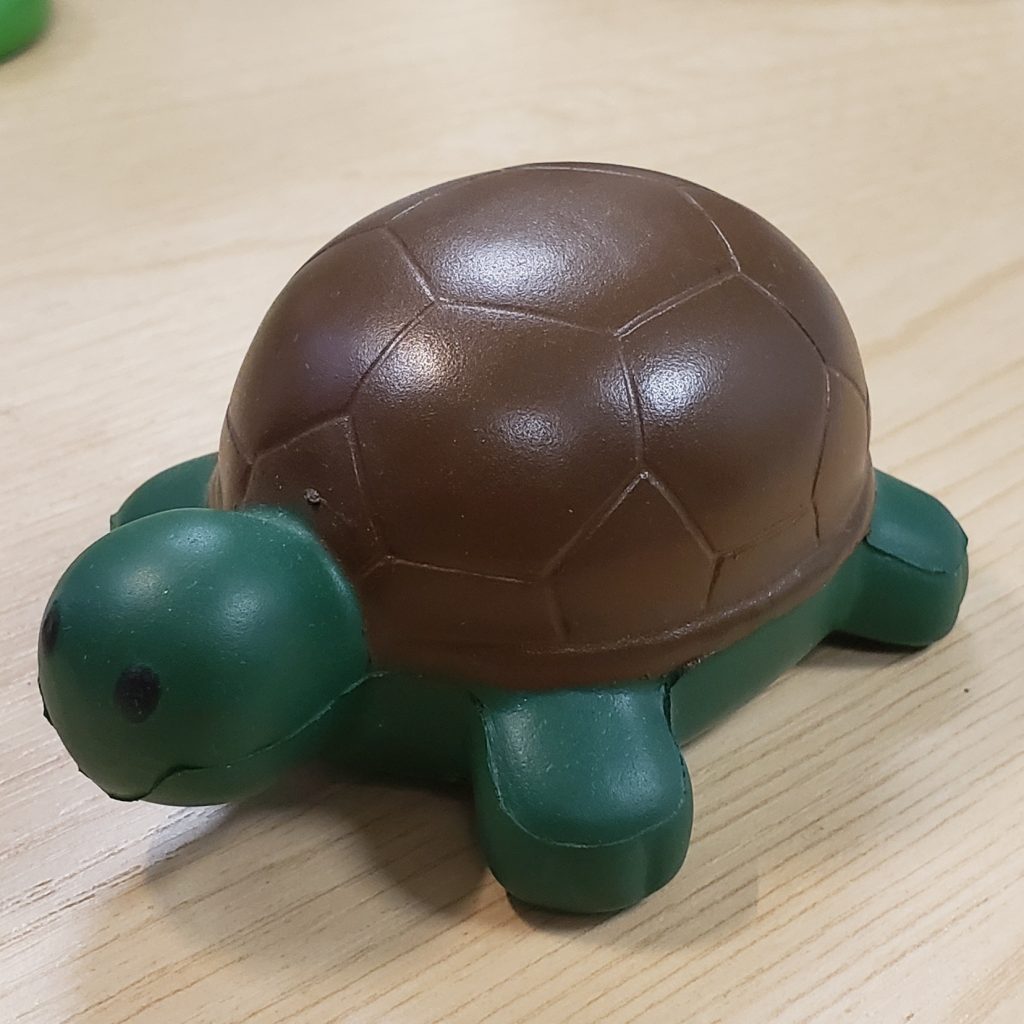
I am excited to announce that I am now an Associate editor for the Journal of Evolutionary Biology! It is really great to be able to support this society journal.
Expect plenty of reviewer requests from me in the near future!
Happy JEB Turtle!
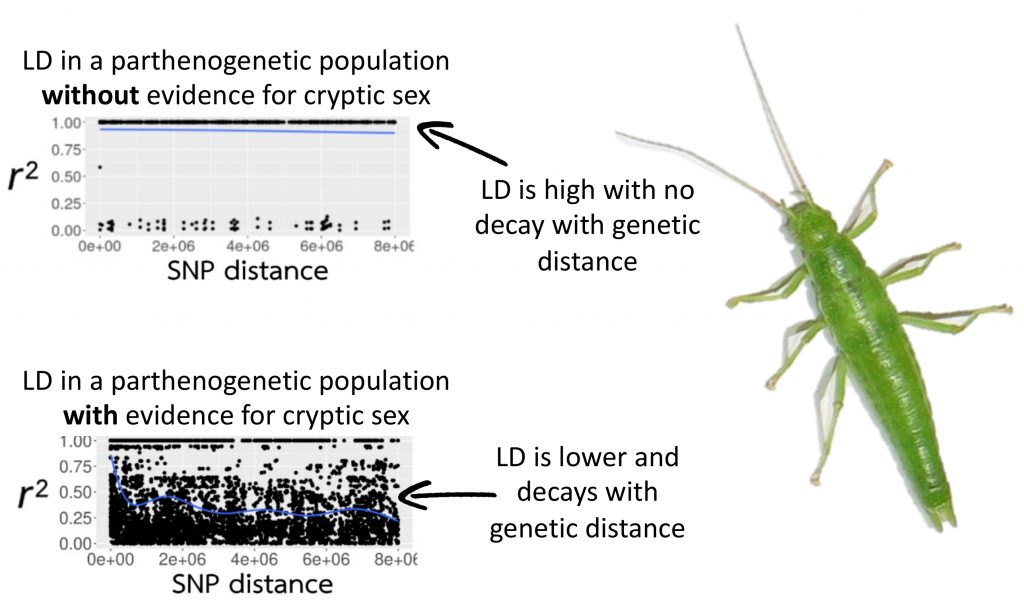
Last week we managed to get out two new preprints!
Firstly, are parthenogenetic species avoiding the costs of parthenogenesis by having cryptic sex?
In our new paper, we screen for genetic signatures of cryptic sex in eight populations of parthenogenetic Timema stick insects and found evidence for sex in two of them!
Cryptic sex is likely mediated by rare males and may help to explain the unusual success of parthenogenesis in Timema. This also raises the question of whether episodes of rare sex are in fact the simplest explanation for the persistence of many old parthenogens in nature.
This work was led by Susana Freitas with help from myself, Marjorie Labédan, Zoé Dumas, and Tanja Schwander.
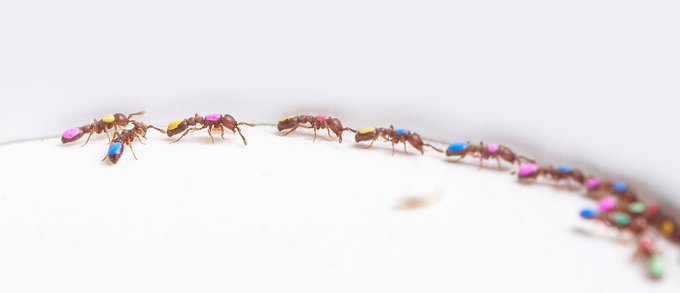
In the second paper, we find not only that Diploscapter nematodes differentially infect foraging ants (Ooceraea biroi) but also that they change the behaviour of their hosts so they spend less time outside the nest. This has the effect of reducing the division of labour and increasing the spatial overlap between hosts, which is expected to facilitate parasite transmission.
This means that division of labour not only shapes infection risk and distribution but can also be modified by parasites.
This work was led by Zimai Li in Yuko Ulrich’s lab.

Excited to announce our new third-year module ‘Animal reproductive strategies’ has just been accepted for inclusion into the new (2025) curriculum for Zoology!
Jointly organised with Kirsty MacLeod, in this module we will examine the causes and consequences of the incredible diversity of reproductive strategies found in animals.
Photo credit: Chun-Che Chang
….And just like that my first semester as a lecturer draws to a close. It has been a crazy few months but overall was a lot of fun!
A few things I have learned:
Writing lectures takes a long time.
Practical session prep takes even longer.
Teaching would collapse if it wasn’t for the technicians.
Enjoy your break everyone!


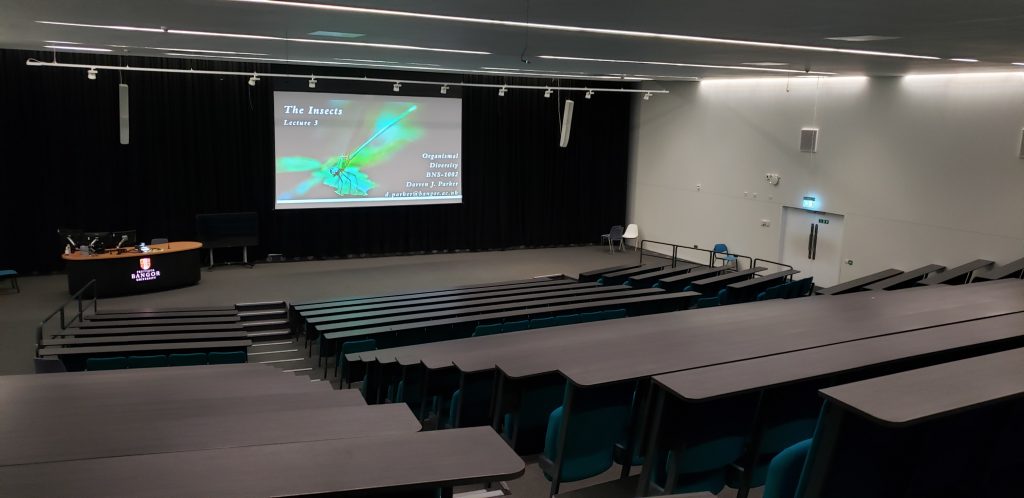
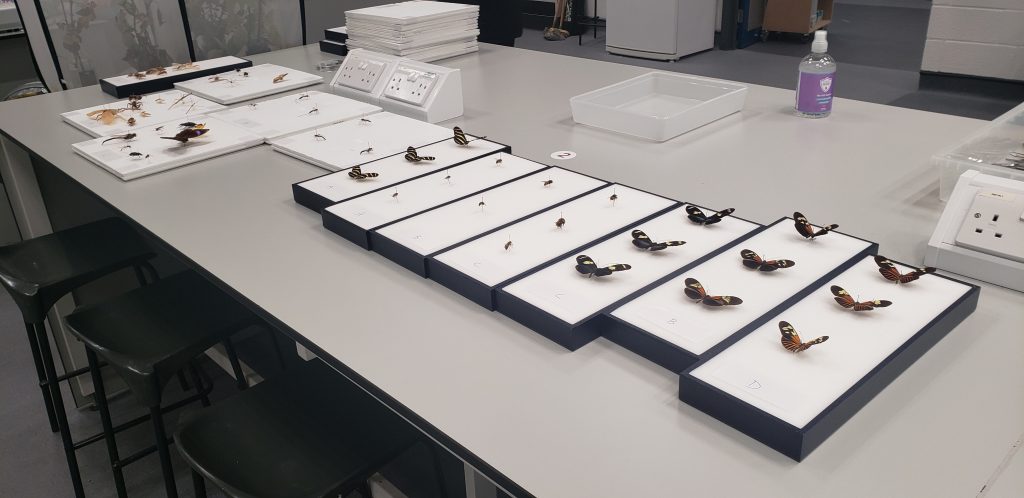
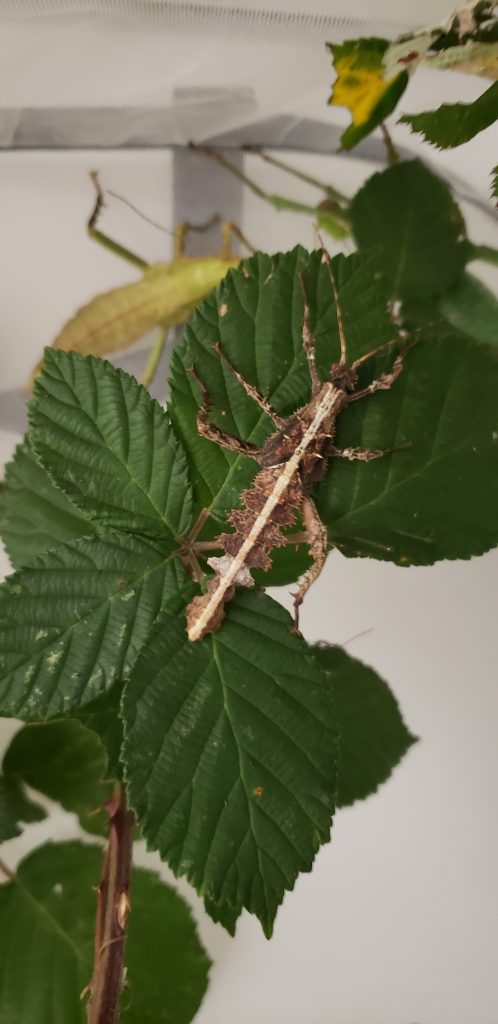

The Journal of Evolutionary Biology’s special issue on sex chromosome evolution (which includes our paper) is now out with this wonderful cover image (by Maggie Schedl).
Thanks to Wen-Juan Ma and Michail Rovatsos for including us in this issue.

Great to welcome our new (and largest ever) cohort of students last week with a trip to Treborth Botanic Gardens!
Now I’d better actually write some lectures…
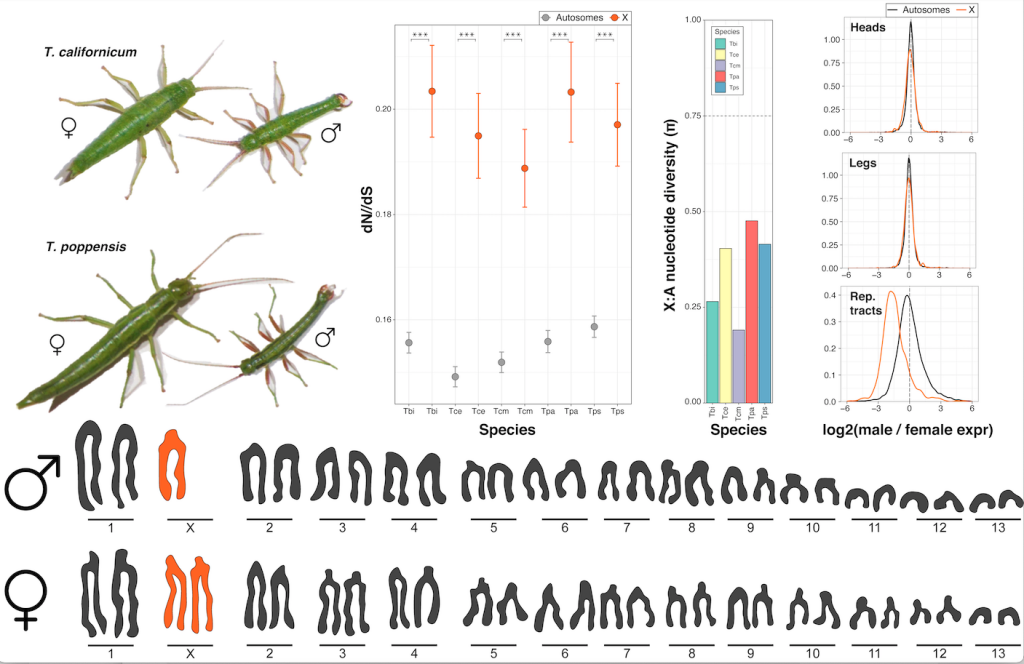
How do genes on sex chromosomes evolve in Timema?
In our new paper, we identify and examine patterns of sequence evolution and gene expression on the X chromosome across five Timema species.
Overall we find consistent evidence for relaxed selection on the X and complete dosage compensation in somatic tissues but not the reproductive tracts.
Interestingly, we also find that genetic diversity is much lower on the X than expected (X to autosomes ratio of 0.19 to 0.48, much lower than the expectation of 0.75), which may be due to a combination of a lower effective recombination rate on the X and population bottlenecks.
Finally, we find that dosage compensation in Timema seems to be due to the upregulation of the X chromosome in males. This mechanism is also common to all other XX/XY or XX/X0 insect systems yet studied, suggesting that this mechanism may be universal for insect species with heterogametic males.